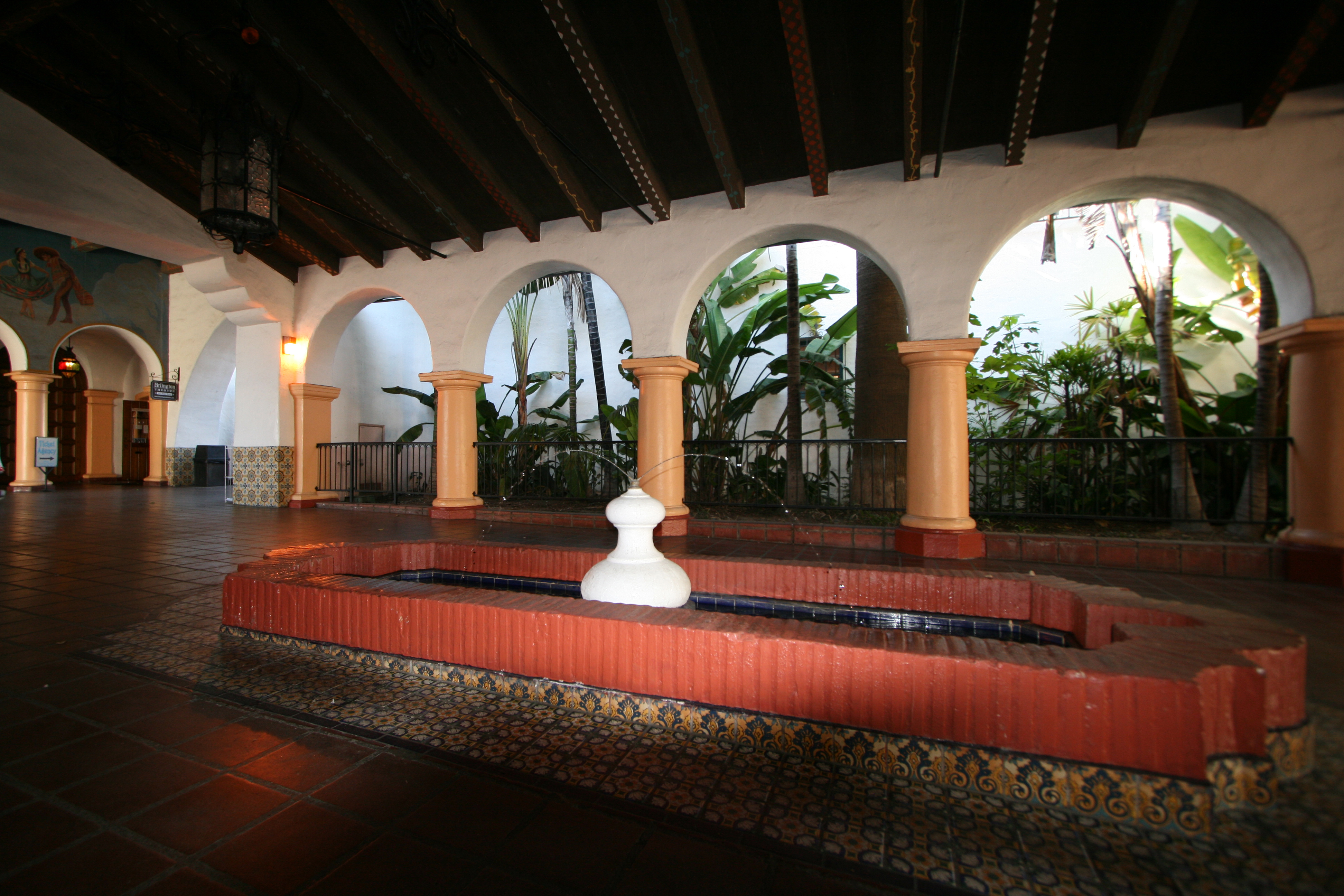Arlington Theatre on:
[Wikipedia]
[Google]
[Amazon]
The Arlington Theatre is the largest movie theater and principal performing arts venue in


 The Arlington was designed in the
The Arlington was designed in the
Architect Joseph J. Plunkett: Designed gems from the Arlington to the airport
, ''Santa Barbara Independent'', 2 March 2017. The exterior has a Mission Revival steeple that ends in an art deco finial. The red tiled building features a covered courtyard with fountain and a free-standing
The Arlington Theatre
- Venue Official Website
Santa Barbara Film Festival
- Main page features photo illustration of the Arlington marquee. {{Authority control Cinemas and movie theaters in California Tourist attractions in Santa Barbara, California Music venues in California Concert halls in California Spanish Colonial Revival architecture in California Mission Revival architecture in California Buildings and structures in Santa Barbara, California Event venues established in 1931
Santa Barbara, California
Santa Barbara ( es, Santa Bárbara, meaning "Saint Barbara") is a coastal city in Santa Barbara County, California, of which it is also the county seat. Situated on a south-facing section of coastline, the longest such section on the West Co ...
, United States. In addition to regular screenings and artists, it is home to many events associated with the annual Santa Barbara International Film Festival.
History
Located at 1317 State Street, the Arlington was built in 1931 on the former site of the Arlington Hotel, which was destroyed following the 1925 earthquake. The current structure was erected in 1930 as a showcase movie house forFox West Coast Theaters
Fox Theatres was a large chain of movie theaters in the United States dating from the 1920s either built by Fox Film studio owner William Fox, or subsequently merged in 1929 by Fox with the West Coast Theatres chain, to form the Fox West ...
. It was restored and expanded in the mid-1970s by Metropolitan Theaters Corporation. It opened in its current incarnation in 1976.
Architecture


 The Arlington was designed in the
The Arlington was designed in the Mission Revival
The Mission Revival style was part of an architectural movement, beginning in the late 19th century, for the revival and reinterpretation of American colonial styles. Mission Revival drew inspiration from the late 18th and early 19th century ...
and Spanish Colonial Revival style
The Spanish Colonial Revival Style ( es, Arquitectura neocolonial española) is an architectural stylistic movement arising in the early 20th century based on the Spanish Colonial architecture of the Spanish colonization of the Americas.
In the ...
s in a period when Santa Barbara was being rebuilt in that style following a powerful earthquake in 1925. It was designed by the Santa Barbara architectural firm of Edwards and Plunkett, which was formed in 1925 by William A. Edwards and Joseph J. Plunkett and dissolved in 1940 when Edwards left to take a government job.Michael Redmon,Architect Joseph J. Plunkett: Designed gems from the Arlington to the airport
, ''Santa Barbara Independent'', 2 March 2017. The exterior has a Mission Revival steeple that ends in an art deco finial. The red tiled building features a covered courtyard with fountain and a free-standing
ticket booth
A box office or ticket office is a place where tickets are sold to the public for admission to an event. Patrons may perform the transaction at a countertop, through a hole in a wall or window, or at a wicket. By extension, the term is fr ...
.
The interior is elaborately decorated. The ceilings of the lobbies are heavily beamed and painted. The auditorium itself seats 2,018 on the main floor and balcony.
It is built to give theatergoers the impression that they are sitting outside in the plaza of a colonial Spanish town, each wall features houses, staircases, and balconies, not painted on but built out from the walls.
The proscenium, in the original theater, was formed by what appeared to be a large stone arc, through which could be seen a river and hills (these were painted on the curtain.) Today, this effect is gone, and the proscenium is topped by the equipment necessary for lighting stage shows. The original ceiling remains to give patrons the impression that they are sitting outdoors under the stars.
One of the Arlington's signature features is a Robert Morton pipe organ from the Loew's Jersey Theatre that was installed in 1949. Hidden below the orchestra floor, the organ's console rises on a platform into view when played at a performance.
Notes
External links
The Arlington Theatre
- Venue Official Website
Santa Barbara Film Festival
- Main page features photo illustration of the Arlington marquee. {{Authority control Cinemas and movie theaters in California Tourist attractions in Santa Barbara, California Music venues in California Concert halls in California Spanish Colonial Revival architecture in California Mission Revival architecture in California Buildings and structures in Santa Barbara, California Event venues established in 1931